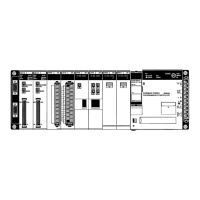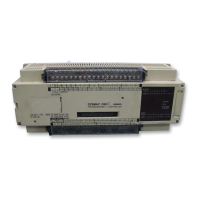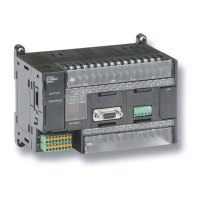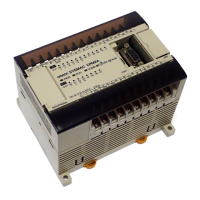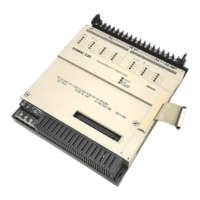171
Flags ER: Indirectly
addressed DM word
is non-existent. (Content of
∗
DM word is
not BCD, or the DM area boundary has been exceeded.)
EQ: ON if Cp1 equals Cp2.
LE: ON if Cp1 is less than Cp2.
GR: ON if Cp1 is greater than Cp2.
Flag Address C1 < C2 C1 = C2 C1 > C2
GR 25505 OFF OFF ON
EQ 25506 OFF ON OFF
LE 25507 ON OFF OFF
The
following example shows how to save the comparison result immediately
. If
the
content of HR 09 is greater than that of 010, 00200 is turned ON; if the two
contents are equal, 00201 is turned ON; if content of HR 09 is less
than that of
010,
00202 is turned ON. In some applications, only one of the three OUT
s would
be
necessary
, making the use
of TR 0 unnecessary
. With this type of program
-
ming, 00200, 00201, and 00202 are changed only when CMP(20) is
executed.
CMP(20)
010
HR 09
00000
25505
00200
25507
00202
TR
0
25506
00201
Greater Than
Equal
Less Than
Address Instruction Operands Address Instruction Operands
00000 LD 00000
00001 OUT TR 0
00002 CMP(20)
010
HR 09
00003 LD TR 0
00004 AND 25505
00005 OUT 00200
00006 LD TR 0
00007 AND 25506
00008 OUT 00201
00009 LD TR 0
00010 AND 25507
00011 OUT 00202
The
following example uses TIM, CMP(20), and the LE flag (25507) to produce
outputs
at particular times in the timer
’
s countdown. The timer is started by turn
-
ing ON 00000. When 00000 is OFF, TIM 010 is reset and the second two
CMP(20)s
are not executed
(i.e., executed with OFF execution conditions). Out
-
put
00200
is produced after 100 seconds; output 00201, after 200 seconds; out
-
put 00202, after 300 seconds; and output 00204, after 500 seconds.
Example 1:
Saving CMP(20) Results
Example 2:
Obtaining Indications
during Timer Operation
Data Comparison Section 5-17
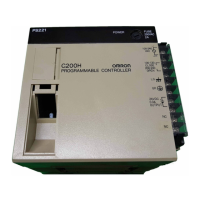
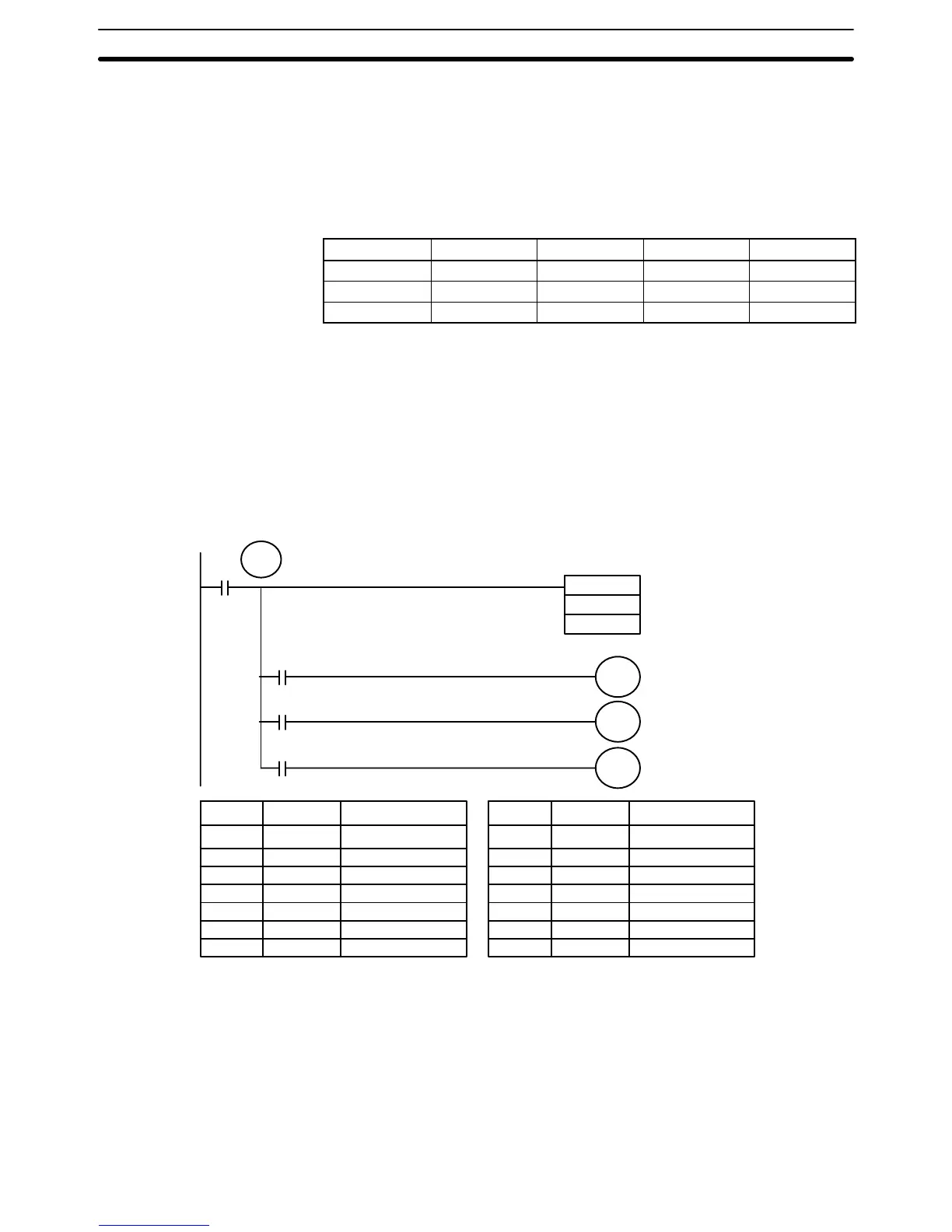